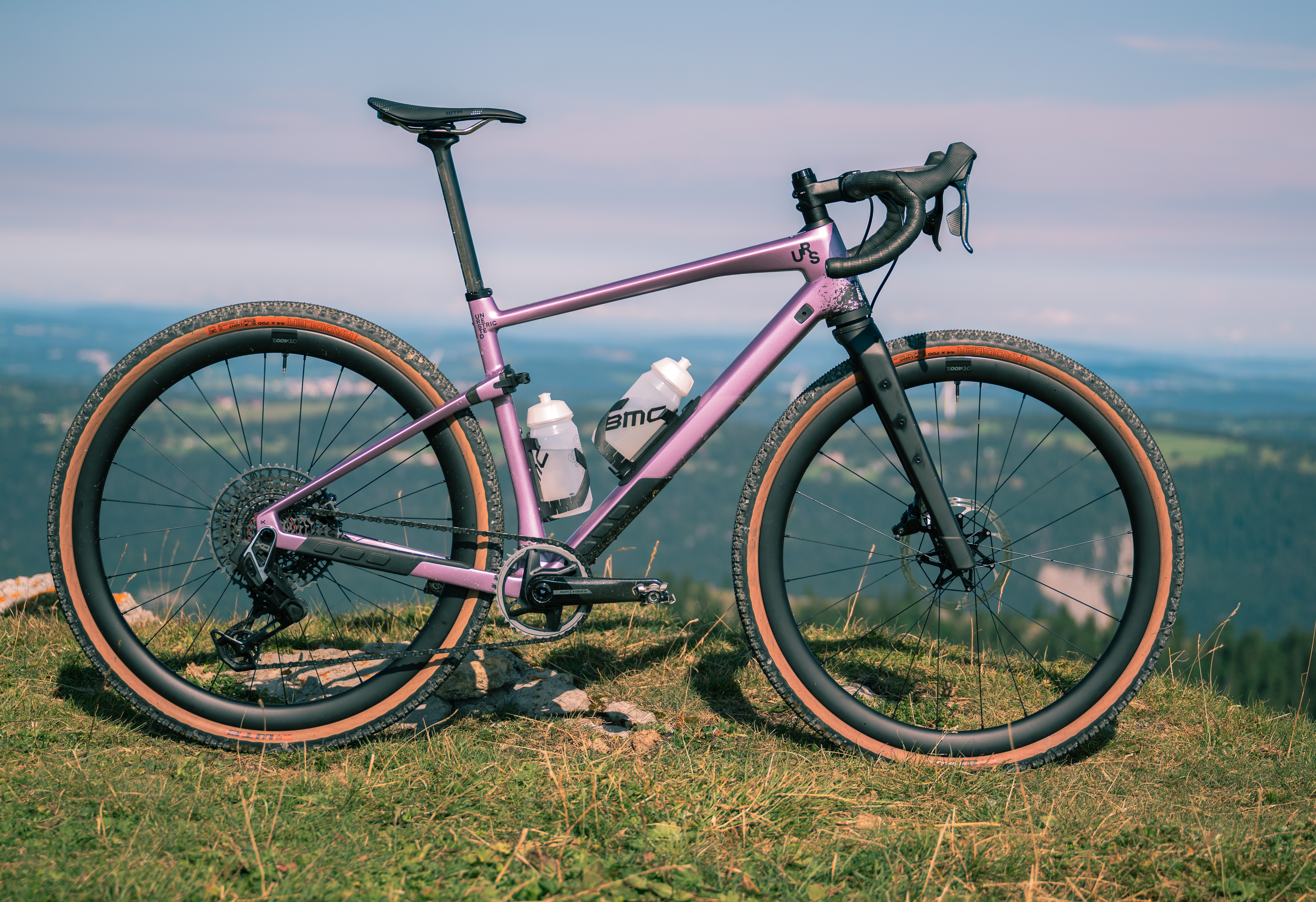
BMC has refreshed its versatile URS line of adventure gravel bikes, with the goal of making them more capable off-road. Headline updates follow current industry trends, namely wider tyre clearances and slacker geometry, but it’s worth remembering that the URS, in all its guises, was already a very able bike over rough terrain.
This latest iteration builds on that purposeful foundation - a quality that BMC likes to call ‘Unrestricted’. It’s a machine built for bike packing, exploration, time spent in nature, and having fun hooning about off-road. It’s not an all-road bike or a gravel race bike – BMC has the Roadmachine X and the Kaius for those scenarios.
In fact, the URS blurs the line between gravel bike and hardtail, a contentious issue right now with leading riders like Keegan Swenson competing in events such as Leadville 100 on XC mountain bikes fitted with drop bars.
BMC has also introduced a gravel e-bike version of the URS, which in itself isn’t particularly out of the ordinary. But, with the use case so strong, it could promote wider acceptance of electric motors within the e-bike resistant drop bar community. A gateway bike, if you will.
There are four primary models within the wider URS range: the URS, URS 01, URS 01 LT and electric URS AMP LT, with all but the latter available in a variety of different builds. It’s probably easiest to think of the URS as the base model, with the URS 01 and its variants more premium choices. However, with prices starting at $5,999, none of these bikes can be considered inexpensive.
Before getting into the detail of each model, let’s look at how BMC has revised the major common features.
Features and upgrades
Improved tyre clearance
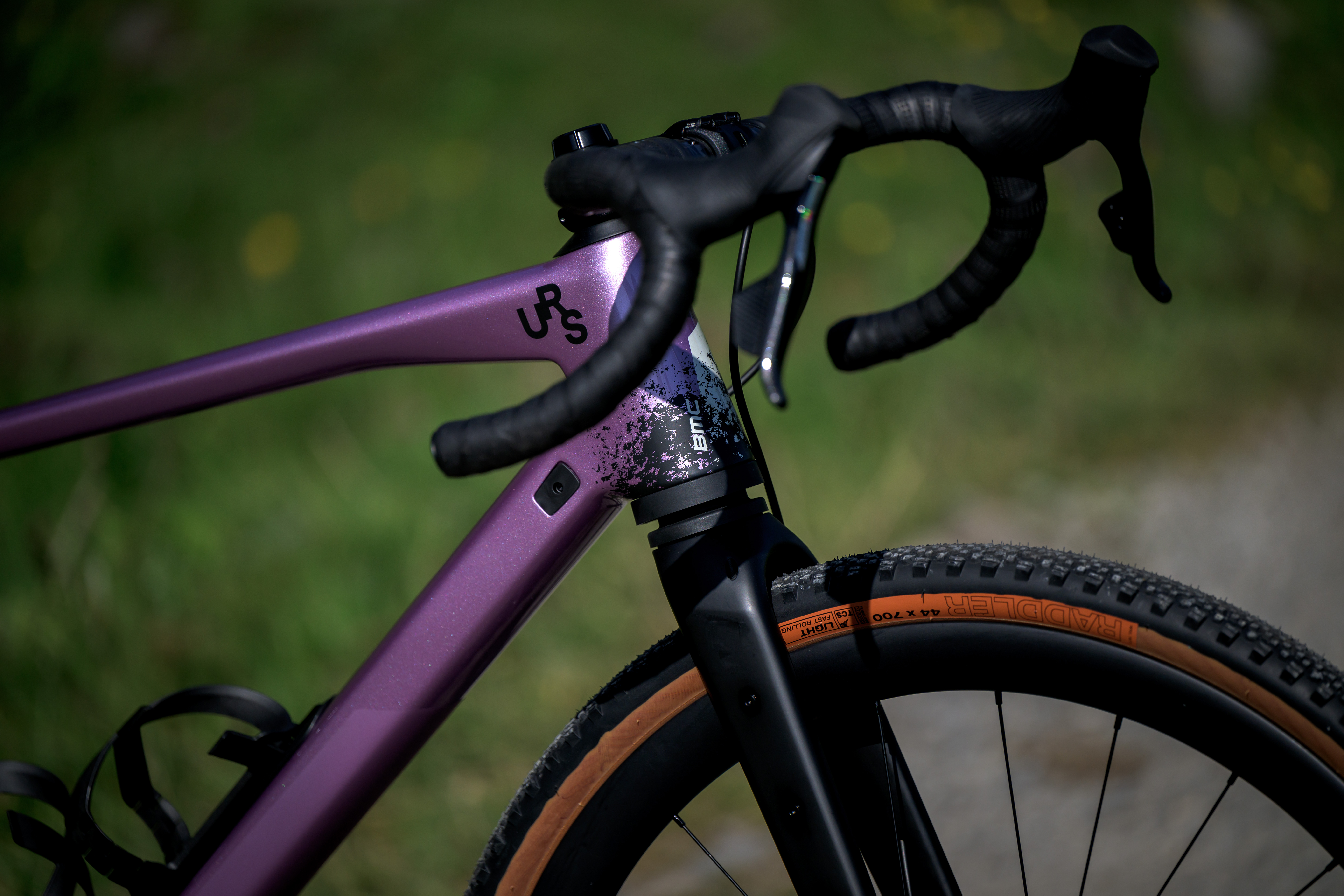
All four models ship with 44mm tyres with clearance for up to 47mm (measured). BMC says 50mm (measured) tyres will fit but only just, so the brand doesn't recommend them. If you absolutely must fit them then limit your riding to dry conditions where you’re not going to pick up any mud - which will preclude most of us.
The URS can also take 650b wheels as an aftermarket option, in which case 50mm clearance is genuinely available.
The advantage of running bigger tyres is the increased air volume this provides. More volume means you can run lower pressures, which increases grip and lessens the risk of punctures. Lower pressures will also lessen rider fatigue during long stretches over uneven ground.
At launch, most URS models were fitted with WTB Raddler tyres, which is fast-rolling rubber with a relatively subtle centre tread lined with toothy outer knobs for enhanced grip, especially on loose corners or deep mud.
Geometry
The URS’s geometry is characterised by a long frame reach, combined with a short stem. On a size M, this is 410 and 72mm respectively. This is a geo trick that will be familiar to mountain bikers because the enhanced reach provides stability, while a short stem gives extremely direct and responsive handling.
The head angle is now even slacker too at 69.5 °, for more confident handling on steep downhill sections. Conversely, the seat tube remains relatively steep at 74.5° to bring the rider’s weight over the centre of the bike for better balance and control on ascents.
The additional tyre clearance has either enabled or required — depending on how you look at it — longer chainstays, which have grown 5mm to 430mm (435mm on the AMP), increasing the wheelbase to 1077mm for a size M, up from 1064 for the previous version.
The bottom bracket has also been dropped by 7mm to lower the centre of gravity, which doesn’t sound like a lot but BMC maintains that it makes a difference.
Lastly, BMC has increased the number of frame sizes by one to five, from XS to XL. This means the URS should be rideable for anyone from "below 167 cm" (we will ask BMC for clarification as to the starting height) to 188 cm in height and taller. I’m 190cm and both the L and XL fitted me well.
Suspension options
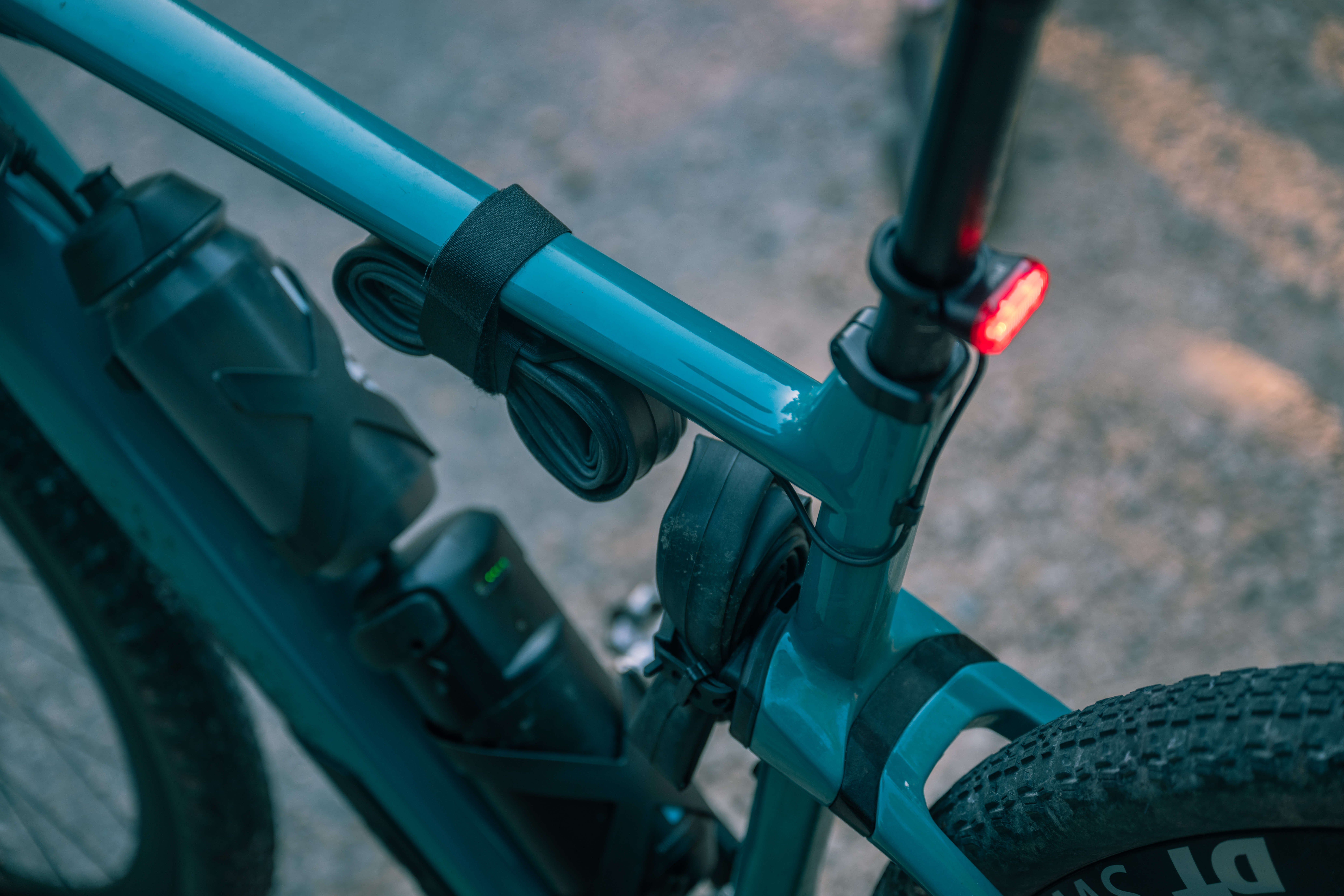
All models, other than the base URS, feature suspension, as did the outgoing range. This is either to improve comfort, so you can ride longer with less fatigue, or to enable the front wheel to better track uneven surfaces for improved grip. The latter allows you to explore routes that previously would have been too ambitious for a gravel bike.
The URS 01 features MicroTravel Technology (MTT) seatstays and an ICS MTT stem. The seat stays feature an XCell damper at the junction with the seat tube that gives the rear triangle 10 mm of travel, measured from the centre of the rear wheel. None of this is new, but with this latest model of URS it is possible to easily swap in and out dampers to alter ride quality. Three different grades are available - soft, medium and hard.
BMC licences the technology for the ICS MTT stem from Redshift, but makes some significant tweaks, including provision for integrated cabling. It’s a simple system that relies on compliant elastomer inserts to significantly reduce vibration through the handlebars when traversing rough surfaces. The amount of cushion can be easily adjusted to suit the rider or conditions by simply replacing elastomer inserts. Five levels of hardness are available.
The 01 LT model keeps the rear suspension but ditches the stem in favour of an MTT suspension fork with 20mm of sprung travel. The coil suspension element is almost entirely concealed within the headtube, but springs possessing different tensions, and washers offering alternative levels of preload, are available as options.
The MTT fork can also be locked for road use, or left wide open for off-road, via an aluminium Hi-Ride dial positioned on top of the stem.
Available groupsets
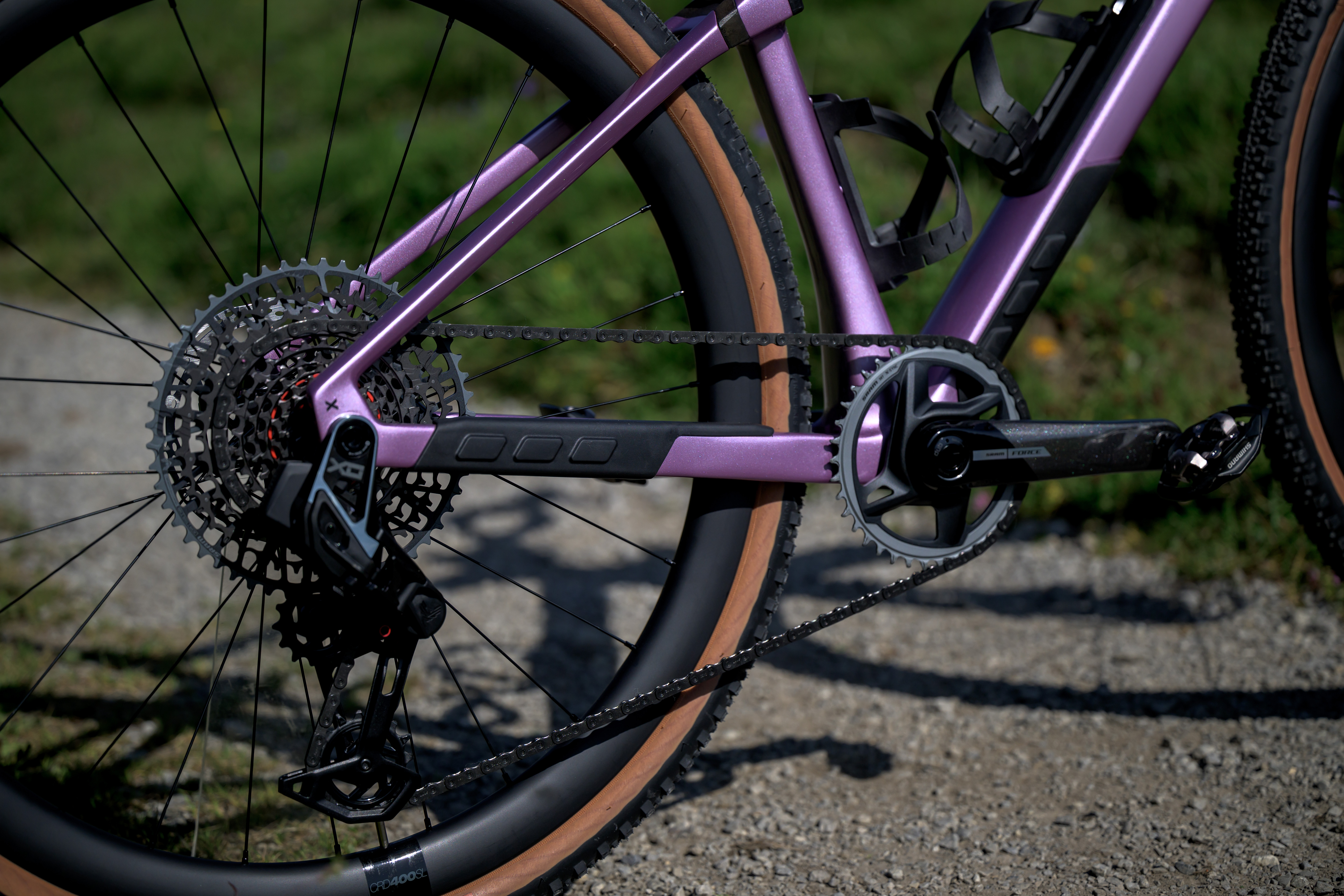
BMC has adopted SRAM’s UDH for the URS, primarily I suspect to take advantage of SRAM’s new Red XPLR AXS groupset, which is only compatible with UDH-equipped bikes.
A key advantage of UDH is that it provides a precise interface between rear mech and dropout by completely doing away with the need for a derailleur hanger. This results in more precise, more reliable shifting. It’s more robust too, because there’s no hanger to bend on a rock strike or drop.
There are currently no Shimano groupset options for the URS because BMC prefer a ‘mullet’ option - mtb components at the rear and road-spaced cranks up front - that, right now, is better served by SRAM. Exact component choice differs from build to build but, as an example, the top-tier URS 01 ONE features a mix of SRAM RED XPLR AXS components with SRAM XX SL Eagle Transmission at the rear.
Mounts and protection
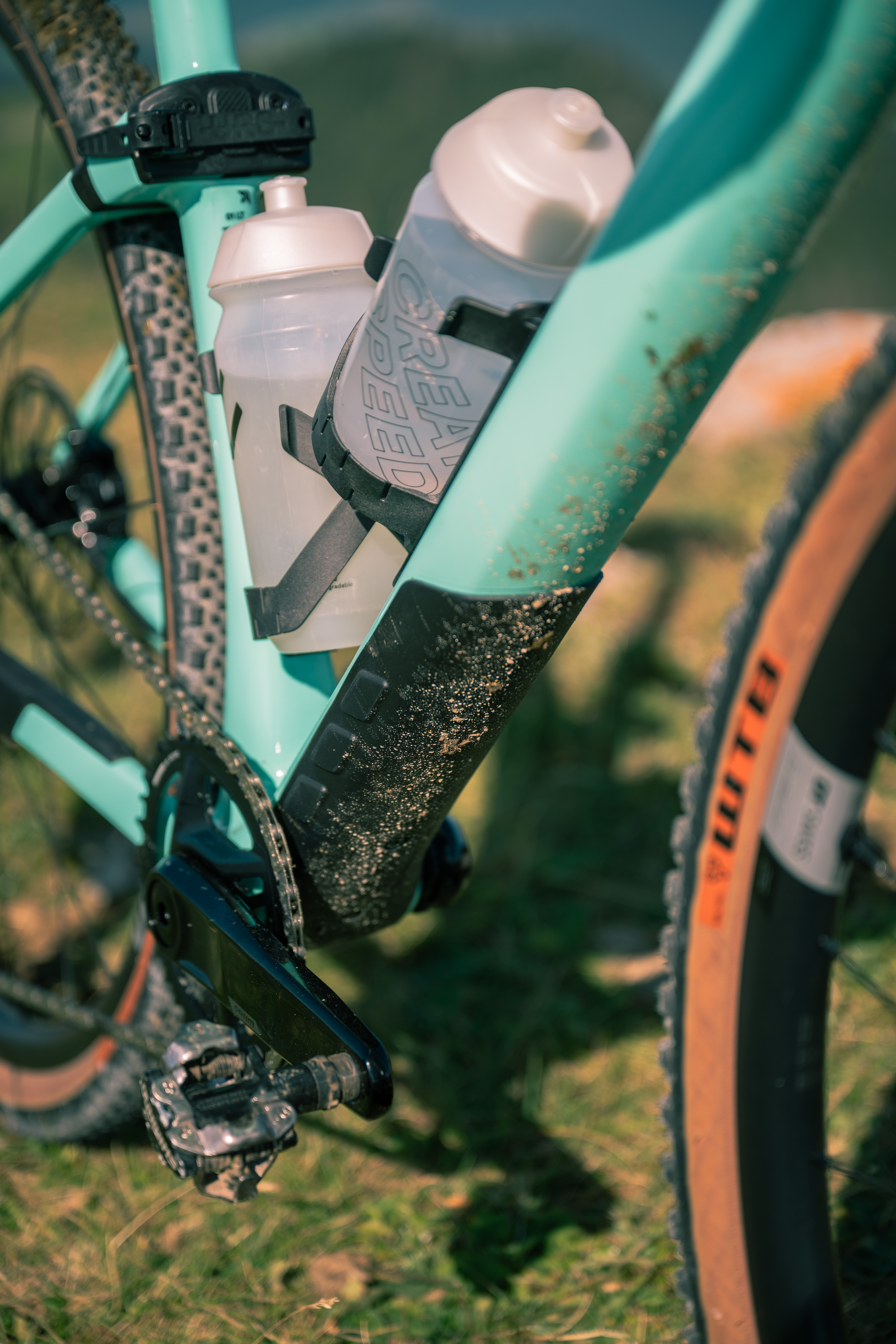
Of course, it’s obligatory to carry plenty of kit with you on your adventures. Fortunately, every URS model is covered in a rash of mounting points, including those for racks and fenders. You find them on the fork, down tube, seat tube, top tube, rear stays - pretty much everywhere in fact.
It seems that no gravel bike these days is worthy even of consideration for an adventure unless it has down tube storage, preferably hidden behind the bottle cage. Yes, I know it keeps your mini-tool and spare tube nice and clean but I can’t help thinking that these little spaces, which need a lot of reinforcing, do little but add weight to a frame. BMC has, of course, provided.
The 01 models feature extensive frame protection, including a long, rubberised down tube and BB cover, to prevent rock strikes marking the frame or worse.
Model breakdown
URS
The base URS model is the purist’s choice. It doesn’t feature suspension, nor does it have integrated cabling or much in the way of frame protection.
It does, however, feel more direct to ride, which will appeal to those looking for a bike suited to fast gravel. Available in two builds, it’s the only model that can be specced with mechanical shifting.
URS 01
The URS 01 is quite an upgrade from the base URS because it features suspension. With MTT seatstays and an ICS TT stem, this bike is more comfortable and capable off-road then the base URS. It also features extended frame protection.
At launch, it’s available in three build levels.
URS 01 LT
The 01 LT model favours an MTT suspension fork with 20mm of travel for increased contact and grip when riding uneven ground. It’s currently available in two build configurations.
URS AMP LT
This model is almost identical to the 01 LT, but is fitted with a near-silent HPR50 motor that outputs 50 Nm of torque and up to 300 watts of peak power. This boosts its off-road capability considerably, whether you’re a fit rider or not. It’s available in just one build configuration.
First ride impressions
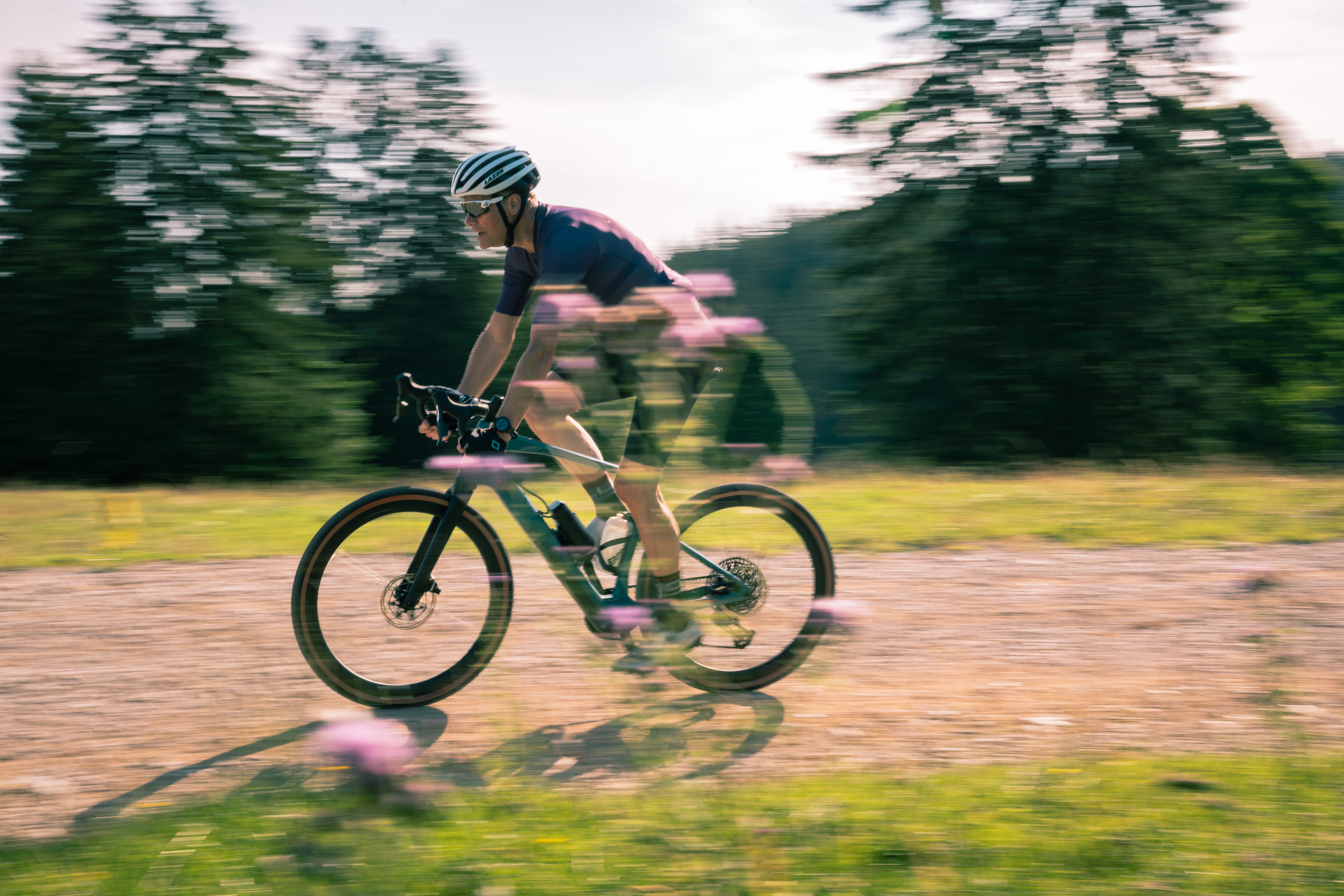
For the URS launch, BMC invited me to ride approximately 100km of gravel and mixed surfaces near its HQ in the Swiss Jura mountains. More specifically, I was riding the high ridge to the north of Olten and Neuchatel that encompasses the Thal National Park and peaks such as Weissenstein, the Hasenmatt and the Grenchenberg.
The route really was diverse - everything from broad gravel tracks sweeping through alpine meadows to narrow singletrack tightly meandering through woodland of hornbeam and beech.
The gravel farm tracks served up plenty of steep ascent and, of course, descent. For the most part, the gravel particles were small, deep and loose but occasionally we’d come across sections with gullies filled with chunkier, loose rocks.
The single track was invariably far less friendly. Very steep, twisty and lined with fearsome-looking rock gardens, it required some care and for me, at least, the occasional bit of hike-a-bike. However, we were always riding within the sound of cowbells, if it sounds idyllic, well, it was.
I rode all four bikes. The base URS felt tight and controlled, with that slacker headtube — I could see the front wheel way out in front, much further than I’m used to — giving it an air of stability on the downhill sections. Fast, accurate and quick to accelerate, nothing much seemed to unsettle it.
However, add suspension into the mix, working in tandem with plush 42mm tyres, and the URS becomes a different beast entirely. The MTT stem does a great job of increasing comfort by reducing vibration through the hands and wrists but the MTT fork was on a different level again.
Riding the URS LT was an eye-opener for me. I found myself floating across the rocky sections that I’d found mildly terrifying just a few hours before. Yet, strangely enough, I noticed no handicap in terms of torsional stiffness on the faster, sweeping gravel sections or tarmac lanes. We weren’t hanging about either - my Karoo recorded speeds of up to 68 kph.
Some of the worst surfaces we covered in terms of comfort were grass meadows pockmarked with the deep indentations left by cow hooves — akin to riding cobbles, but worse. I’m not going to pretend that I floated across these too, but at least the suspension fork made them bearable, and I still have all my own teeth to prove it.
Adding the TQ motor was a game-changer. Riding the URS AMP LT, ascents that would ordinarily have been too steep and loose, suddenly became feasible. To some extent I could make up for my lack of bike skills by just powering on through.
Long, mild ascents that would have become a bore in the humid, 35-degree heat became pleasurable as the passing airflow, generated by my now much-improved effortless speed, cooled my body.
The TQ motor is remarkably smooth and silent, with a very natural ride feel, so I can’t ever remember it intruding on the ride. I can understand why mountain bikers in Europe have fully embraced e-bikes, because at off-road speeds they are operating well under the legal 25 km/h cut-off speed, a figure that’s a real frustration for most roadies because it’s so easy to surpass it. Gravel riders, on the other hand, will spend much more of their time battling on at a more sedate rate, so I can predict an upswell in e-bike interest in the future.
The URS is a fine gravel bike, but that’s kind of missing the point. Push past gravel, into unknown territory where the conditions are likely to get more challenging and it excels.
Specifications
UK pricing is yet to be announced but we can bring you Euro and US dollar costs.
URS 01
ONE
Groupset: SRAM RED XPLR AXS / SRAM XX SL Eagle Transmission
Wheelset: ZIPP 101 XPLR
Price: € / $11,999
THREE
Groupset: Force XPLR AXS / SRAM X0 Eagle Transmission
Wheelset: CRD-400
Price: € / $8,499
FOUR
Groupset: SRAM Rival XPLR AXS / SRAM GX Eagle Transmission
Wheelset: DT Swiss G 1800 SPLINE
Price: € / $5,999
URS 01 LT
ONE
Groupset: SRAM Force XPLR AXS / SRAM X0 Eagle Transmission
Suspension fork: MTT Suspension Fork (HiRide, 20mm)
Wheelset: CRD-400
Price: € / $8,999
TWO
Groupset: SRAM Rival XPLR AXS / SRAM GX Eagle Transmission
Suspension fork: MTT Suspension Fork (HiRide, 20mm)
Wheelset: DT Swiss G 1800 SPLINE
Price: € / $6,499
URS AMP LT e-bike
Groupset: SRAM Force XPLR AXS / SRAM X0 Eagle Transmission
Suspension fork: MTT Suspension Fork (HiRide, 20mm)
Wheelset: CRD-400
Motor: TQ HPR50
Price: € / $9,999
URS
TWO
Groupset: SRAM Apex XPLR AXS / SRAM X1 Eagle AXS
Wheelset: DT Swiss G 1800 SPLINE
Price: € / $4,499
THREE
Groupset: SRAM Apex 1 / SRAM Apex Eagle
Wheelset: DT Swiss G 1800 SPLINE
Price: € / $3,799







